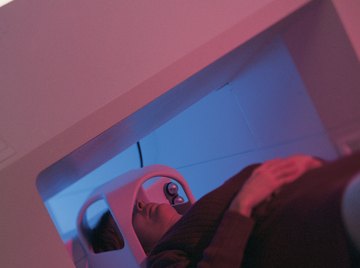
The half-value layer, abbreviated as HVL, is a measurement used in modern imaging. It represents the thickness of a material that will reduce a particular radiation by one-half the level of intensity.
The HVL is unique not only to the material the radiation encounters, but also to the type of radiation itself. For example, the HVL for lead is different than that of steel. Similarly, the HVL for gamma rays is different than that of x-rays. The half value layer of lead for Cs-137 is not the same is the half value layer of steel for isotopes (elements) other than Cs-137.
HVL can be determined experimentally or mathematically, using its inverse relationship to the attenuation coefficient.
Experimental Derivation
Position an x-ray source so it radiates on an exposure meter.
Turn on the x-ray source.
Read the exposure level on the exposure meter. This value with no absorbers between the devices is your 100 percent reading.
Turn off the x-ray source and place an absorber between the x-ray source and the exposure meter. Turn the source back on.
Read the exposure meter. If the exposure is more than 50 percent of the intensity of the x-rays from the source, turn off the source and add another absorber. Then turn the source back on.
Repeat Step 5 until the exposure is 50 percent of your initial value. This total thickness of the absorbers is the half-value layer.
Mathematical Derivation
Determine the attenuation coefficient of a material. This can be found in a table of attenuation coefficient or from the manufacturer of the material.
Divide 0.693 by the attenuation coefficient to determine the HVL.
The half-value layer formula is:
Where μ (the Greek letter mu) is the attenuation coefficient. 0.693 corresponds to ln 2, where "ln" refers to natural logarithm in mathematics, a property related to exponents.
Multiply your answer by 10 to express your HVL in millimeters. This is necessary because many attenuation coefficients are given with the units cm-1, and some HVLs are expressed in mm. Your answer can also be multiplied by 0.39 to convert centimeters to inches.
Other "Values": Tenth-Value Layer Example
The formula for determining protection at an even deeper layer, say the tenth, is like the half value layer formula except that the numerator includes the natural logarithm of 10 (ln 10), or 2.30, instead of ln 2, or 0.693. This can be reproduced for other layers as well.
Things You'll Need
- X-ray generator
- Absorbers (between 0.5 mm and 1 mm in thickness)
- Exposure meter
- Table of attenuation coefficients
Warnings
Overexposure to x-rays and other radiation can be harmful. When using radiation in the lab, take proper precautions to protect yourself.
References
Resources
About the Author
Kevin Carr has been writing for a variety of outlets and companies since 1991. He has contributed to McGraw-Hill textbooks for middle school and high school, written for the Newspaper Network of Central Ohio and has been a featured film critic for online publications including 7M Pictures and Film School Rejects. Carr holds a Bachelor of Science in education.
Photo Credits
Comstock/Comstock/Getty Images
